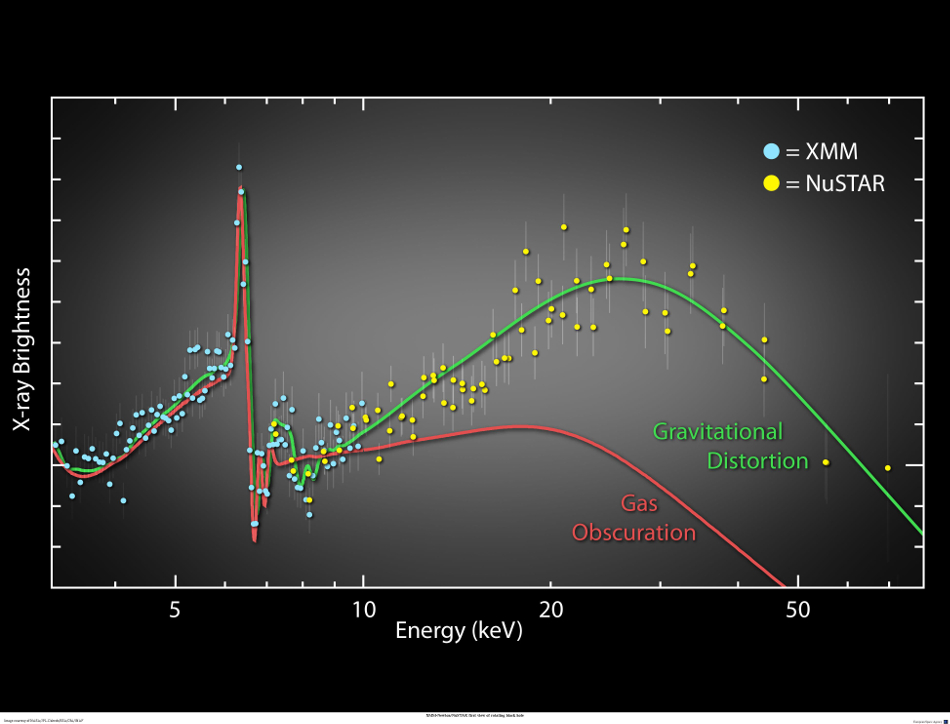
 Credit: NASA/JPL-Caltech/ESA/CfA/INAF and ESA
Credit: NASA/JPL-Caltech/ESA/CfA/INAF and ESA
Spinning Singularity
Black holes are strange regions of incredibly high density, where intense gravity warps spacetime to such an extent that nothing, not even light, can escape (unless, sneakily, through an Einstein-Rosen Wormhole). Oddly enough, black holes can rotate, and spinning black holes are even stranger than their non-spinning cousins: near a spinning black hole, both space and time rotate along with the black hole. Astronomers have tried to measure this contorted spacetime in a number of ways. One technique relies on measuring the distortion in X-ray emission of unfortunate iron atoms close to the black hole's event horizon. However, astronomers could not be certain that the observed distortions were produced by the effects of the spin of the black hole, or by mundane absorption due to cool material near the black hole. In one particularly important case, scientists have now been able to resolve this controversy once and for all, thanks to the combined efforts of the XMM-Newton and NuSTAR X-ray observatories. XMM and NuSTAR simultaneously, for 36 hours, observed a two-million solar mass black hole living in the center of a galaxy called NGC 1365. The XMM-Newton X-ray spectrum, shown in the plot above as blue dot, clearly reveal the contorted iron atom emission - a sharp peak near 7 keV in the plot above, plus a long low-energy tail extending to the left. The NuSTAR spectrum (the yellow circles in the plot above) conclusively show that the high energy X-rays are much brighter than predictions of the gas-cloud absorption models. These combined observations allowed the effects of the black hole's spin to be clearly distinguished from the effects of absorption, and provide a firm measure of the black hole's spin. What must it be like near the black hole, to be spinning along with spacetime itself?
Published: September 16, 2013
<
HEA Dictionary ● Archive
● Search HEAPOW
● Other Languages
● HEAPOW on Facebook
● Download all Images
● Education ● HEAD
>

Each week the HEASARC
brings you new, exciting and beautiful images from X-ray and Gamma ray
astronomy. Check back each week and be sure to check out the HEAPOW archive!
Page Author: Dr. Michael F. Corcoran
Last modified Monday, 26-Feb-2024 17:23:32 EST


